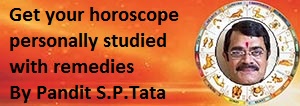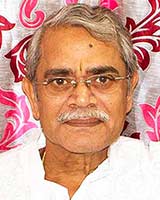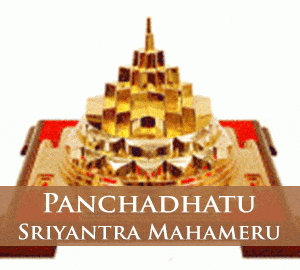CHAPTER 2
YOGA AND THE ART OF HEALING
in Japan there are physicians who kick the patient in the back, twist his neck, or simply give him a heavy slap on the shoulder, and the patient feels like a new man. In China there are physicians who practice acupuncture (the insertion of needles). They prick a place quite apart from the ailing organ and pain disappears–quite suddenly. In Ceylon there are doctors who touch the patient’s skin with a red hot iron–and they aim with the precision of a fraction of a millimeter. A quick pain. The patient is cured.
These are not medicine men at work. Here we have full-fledged physicians who master an art–that nobody in the West can understand? These times have passed. The example of the Japanese doctors has proven itself a hundred times. In America chiropractice has become an academic discipline.
Thus too it is with acupuncture. We now have theses on the subject, as well as practicing Western physicians. The third example (Ceylon) too will no doubt some day be accepted, perhaps along with some practices of medicine men that we ridiculed some 50 years ago. Primitive people are really not as primitive as we in our arrogant prejudice are apt to imagine. Are not the methods of modern politicians more primitive than those of a medicine man in the jungle?
We want to study the following chapters on asanas and their psycho-physical background with this in mind.
“Why so many words?” some will ask. “Asanas are physical exercises.” And in a sense he is right.
“Nonsense,” another will say, “all these senseless contortions.” And in a sense he too is right.
A third will consider asanas a practice that nobody can quite understand. Right too.
A fourth one stands thoughtfully in a corner. “I will learn to understand the inner connections. I have studied medicine and will soon find out what bodily functions are involved. I cannot imagine that the yogis have taken all this out of thin air. There must be a corresponding scientific terminology.” Beware of this man.
Each of the first three critics acknowledged a certain positive aspect of the practice. The first speaks of gymnastics and expects no more than the success of gymnastics. Very good. One should approach these practices not with vague expectations but with clear purposefulness. After all, only the literature of the West presents these preliminary exercises with such great mystification, whereas in comparison with what follows after them they are really little more than gymnastics.
Nor should he who speaks of meaningless contortions be condemned. Perhaps he is right. For who is capable of explaining the internal relationships? Why give the contortions a meaning for which we have not the slightest proof–except for a few books whose value the average Western reader is unable to ascertain? This skeptic is not likely to start practice, but he is justified in his statement if by “sense” he understands that which can be clearly defined by our intellect. These are practices that “nobody can really understand” because they reach too deeply into our inner world, touch on areas that have not yet been named. From this angle no sense can be discovered, just as it cannot be convincingly denied. It is only the Westerner who seeks “sense” in everything. The Asiatic accepts mystery as a fact, and thus the “senseless,” in an intellectual sense, becomes for him sense (in relation to his experience). He experiences the value of that which we cannot understand.
The fourth is the dangerous one, for he swears by his intellectual knowledge alone.
Nobody will claim that our knowledge acquired through the centuries is wrong. No, it is completely right, but utterly incomplete because it is so one-sided. There are more things in heaven and earth than are dreamt of in academia, things that we know exist and that we cannot fathom with our scientifically trained intellect.
“Well,” he will say if he is judicious, “I admit this, but we must have a certain frame of reference. It is quite clear that chakras are nerve centers and nadis represent nerve strands. Why should we deny this? Knowing this does make it easier.” However convincing these words may sound, they contain the seed of the greatest error in yoga: foundering through thought. In other words, the dangerous supposition that the essential can be fathomed by thought, that it is “nothing but,” that with a little effort of our conceptual intellect we can descend to the very depths of our soul, to the foundation of the universe. Certainly this trend of thought is logical, but what good is logic when yoga wisdom is beyond logic?
This phrase has discredited yoga with the intellectuals. But let us look at our lives. Is life always logical? Where is the logic of the scientist who analyzes natural laws six days a week and on the seventh goes to church to pray to a God who has no place in his logical system of science? Where is the logic of the drug addict who knows he is digging his grave and still does not desist ? Where is the logic of the greedy old man who, with one foot in the grave still craves millions, though he cannot take a penny with him? Is the cosmic mathematics of Einstein which created our atomic age limited to logic ? And how about the fate of the evil rich man and the virtuous poor? Is chance logical? No, the decisive factors of our existence have nothing to do with logic, and therefore we can readily postulate that the essential interrelations in yoga cannot be penetrated by logical deductions, which, however, does not mean that there is no law.
When we seem to detect an analogy between a certain concept in yoga and a Western scientific term we must at once deny ourselves all further investigations of an analogy. Why? When one mistakes the part for the whole, as often happens in Western science, one underestimates the whole because one applies to it the lesser value of the part. And how can we possibly judge anything if we know only one of its many facets, and not even the most essential one at that? Take the example of the chakras, the centers of power, which are often identified with chief nerve centers (ganglia), or with main glands, simply because there is a topographical similarity. With this we confuse cause and effect.
Although we know very little about the central nervous system and the glands, we do know enough to gauge their effects. But what we can learn about chakras in yoga is immense. If the system of chakras were identical with the central nervous system (CNS), then either all our academic knowledge would be wrong, or the yoga teachings would be empty fantasies. But neither is the case. Our knowledge about the CNS applies to the material aspect only, while chakra theory goes to the deepest sources of all dynamic processes in man, down to the deepest cosmic functions, to which we are undeniably bound. There are many effects resulting from the activity of the CNS and the glands which will forever remain a mystery if we ignore the much subtler aspects of these chakras.
It is characteristic that the tantric Buddhism of Tibet teaches that the yogi has to create the chakras at the relevant places in his body. They are so to speak “psychic centers” that cannot be practically recognized unless I will it. They are vibration centers which are developed in the course of yoga practice. This alone proves how elusive they are to the surgeon’s knife.
But we have not yet come to these strange things. First now to the “gymnastics” of hatha yoga. Even here we should deny ourselves any profound speculations. Certainly one could–and even with a fair measure of success–draw psychosomatic conclusions from asana such-and-such. But again, logic deserts us after a certain point and what remains cannot be investigated by science, however fine its intentions. And this would mean: beyond the borderline of logic there “really” is nothing. But actually a great deal is there; not only is it there now, but it has been there since the very beginning. The logician does not have to Mother about all this, of course, since he has a wealth of concrete, factual material at his disposal.2
In any event, whether or not certain pranayamas (breathing exercises) regulate the oxygen content of our blood is none of our concern. What is important for us is that forces (currents) arebeing activated that no Western scientist is able fully to evaluate, but which are the very foundation of the whole yoga structure.
Therefore, Western science, despite its undisputed merits, will be neglected in the following chapters, in favor of that ancient science which is the foundation of yoga therapy. This, I think, is much more vital for the understanding of “Eastern exotics.” We should try to think Indian while studying this book–Indian not
2. “At the borderline of logic science stops, but not nature, which blossoms there where no theory has as yet penetrated” (C. G. Jung, The Psychology of Transference).
only in relation to yoga, but also in relation to the presuppositions of yoga.
The art of healing, like all else truly Indian, is based on the Vedas, the oldest book of humanity. Everything that concerns medical theory in the Rig-Veda, the Sama-Veda, the Atharva-Veda, and the Yajur-Veda, was later systematized into Ayurvedic medicine.
Although it is not possible to summarize this gigantic work, which is still in practical use in India today, much less give a survey of the wealth of its principles, we can at least consider the three main concepts of human physiology upon which this system is based. This is important because prejudiced Westerners who cast a superficial eye upon the standard work of Ayurvedic medicine, the Charaka Samhita, have misinterpreted thoroughly these three concepts.
The teaching states that there are three dominant forces in man. and accordingly three main sources of illness: vata, pitta, and kapha. The usual translations as wind, gall, and phlegm are misleading, incomplete, senseless, and simply wrong–as wrong as the false analogies discussed earlier. All three terms are infinitely more complex and become meaningful only in their completeness. To understand the terms vata, pitta, and kapha we need the help of the classical definitions. Comprehension of these terms is all the more important because hatha yoga is closely bound to ayurvedic principles, as we soon shall see.
The three terms encompass all physiological functions of the human body, and their imbalance causes not only illness but also susceptibility to contagious diseases.
Vata
It is true that this word means “wind” literally. But more important is the root va, movement. To quote the Charaka Samhita: “Vata is the source of both structure and function [of the body]. It is that which is represented by the five forms [of the bodily currents]: prana, udana, samana, vyana, and apana. It is the initiator of the upward and downward flow [of all internal processes such as circulation, metabolism, etc.]; the controller and guiding force of consciousness; the stimulant of the senses; the companion of sensations; the organizer of the elements of the body; the principle of synthesis; the storage battery of speech; the cause of feelings and perception; the origin of excitement and stimulation; it fans the gastric fire, dries out harmful phlegm; expels excrements; is purifier of the coarse and the fine channels of the body; the creator of the fetal form; the principle of life preservation. All these are the normal functions of vata in our body” (Char. Sam. 1. 12:8). Disturbance of any one of these functions leads to illness and susceptibility to infection.
Some of the illnesses due to the influence of vata are: rheumatism, dislocations, lameness, cramps, stitfness of limbs, peristaltic irregularities, trembling, emotional and depressive states, everything related to tension, relaxation, expansion and contraction, circulation and metabolism, crookedness and distortion of limbs, abdominal diseases, menstrual irregularities, sterility, hallucinations, and convulsions.
Pitta
This can be translated as “gall,” but here it implies rather that which is also expressed by the word gall: temperament. But this again only in a limited sense. The Charaka Samhita derives this word from the root tap, “to heat,” and this brings us closer to the meaning. We quote: “It is only the fire which in pitta brings on good and bad results, according to the normal or abnormal condition [of the organs]. The results are digestion and indigestion, power of perception and its loss, normal and abnormal body temperatures, healthy and unhealthy look, temerity, fear [nerves], anger and joy [moods], confusion and clarity, and other such contrasting pairs” (Char. Sam. 1. 12:11). “The normal function of pitta causes: power of cognition, fire of digestion, fresh complexion, clarity of thought, body temperature, hunger and thirst, and nimbleness of mind” (Char. Sam. 1. 18:50). Diseases from this source are: inflammation, fever, pus, perspiration, softening of bodily substance, itching, metabolic irregularities, redness, bad odor and taste, as well as discoloration.
Kapha
This word is composed of two roots: ka== “water,” and pha, which refers to the process of biological evolution. And since we know that the body is largely composed of liquid we could translate kapha as “life-fluid.”
“Kapha is the nectar [soma]. It is the fertile water for the play of life; it is living fluid, the protoplasm that sustains all life processes; it is indeed the scaffold of life. It binds the limbs together and produces all the connecting, nourishing, developing, and fortifying functions. It promotes the well-being of the body by its lubricating action. Thus it supplies the water for the roots of life. In its physiological aspect [!] kapha is the power and perseverance of man, which, however, immediately becomes a disturbing impurity when his balance is disturbed” (Char. Sam. 1. 12:12). Kapha ailments are: pallidness, cold, edema, constipation, diabetes, secretions, cold sweat, languidness, and swellings (tumors).
“No pain without vata (the stream of life), no inflammation without pitta (the fire of life), no swellings without kapha (the fluid of life)” This dearly shows the coordination of the three forces, but it also demonstrates–and more clearly than Western medicine does–the interdependence of body and mind.
Naturally the ancient Indian art of healing is not exhausted by these three main terms. On the contrary, this is only the beginning. For us, however, this short survey will suffice. It will elucidate much that is to follow; in fact, much would be unintelligible without it.
We must not forget that these three “doshas” have a material-bodily, as well as an ethereal and an abstract-spiritual aspect. Thus when later on we deal extensively with the prana, the life stream that here is “vata,” then with “soma,” the nectar, the “fertile water for the play of life” that here is “kapha,” and finally with the inner fire that is “pitta,” we should not forget this survey. Soon we will learn that all the wisdom of physiological healing also has its place in higher spiritual spheres.
For the Indian there is one straight path through the universe and situated on this path are all the cities of the world: medicine, philosophy, mathematics, astrology and astronomy, physics, logic, sports, magic, etc., and to him who is fully conversant with any one of them, the others are no secret.
So let us start by looking at yoga with a new physiological understanding. Not so much to relearn, but to understand that there is wisdom in things that seem quite odd to us.











